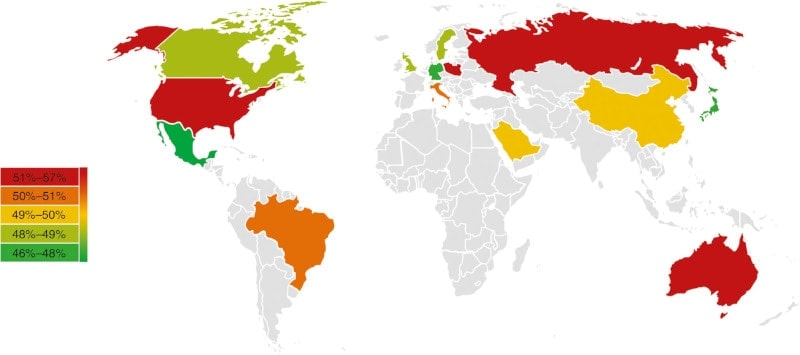Global pain study defies “one-size-fits-all” approach to pain assessment
A recent study combining three online surveys in 14 countries across the Americas, Europe, Australia and Asia found that musculoskeletal pain had a substantial impact on half of the respondents. Yet, the majority of them avoided immediate treatment.
By Martina Hagen
Without a doubt, pain involves not only physical suffering but also socio-emotional reactions, which can be hard to quantify. According to a new study, market research methods could help assess patient perspectives on pain and its impact on quality of life (QOL).
For the corresponding study recently published in the Scandinavian Journal of Pain, pain researchers from Switzerland, Singapore and Australia rolled out three international online surveys. They included participants from fourteen different countries: Australia, Brazil, Canada, China, Germany, Italy, Japan, Poland, Russia, United Kingdom, United States, Mexico, Sweden and Saudi Arabia.
By using eight questions in three different categories, the group constructed a new pain assessment tool, the Global Pain Index (GPI). The three mentioned categories were based on physical aspects of pain (frequency, duration, intensity), emotional aspects (anxiety, impact on self-esteem, happiness), as well as impact on the respondents’ quality of life and their ability to enjoy life.
One third of respondents delayed pain treatment
Of the 50,952 adult respondents, about half reported having experienced substantial musculoskeletal pain in the past with differing effects on their physical (51%) and emotional (40%) wellbeing as well as on their quality of life (59%).
Looking at the different countries, Russia and Poland had the highest GPI scores (56-57%) while Mexico, Germany and Japan had the lowest (46-47%). Furthermore, the GPI score was higher in women (52%) than in men (48%) and initially increased with age. In respondents that were older than 54 years, however, it decreased again. Furthermore, the researchers found that a majority of respondents (65%) waited to treat their pain in order to avoid taking medication.

The researchers behind the study stress that clinicians should not focus solely on the presence and severity of pain but also on how it affects various aspects of patients’ lives and daily functioning. They believe that, “The GPI may be a useful new tool for future studies of the biopsychosocial effects of pain in large populations”.
If you are interested, learn more in the original article here: